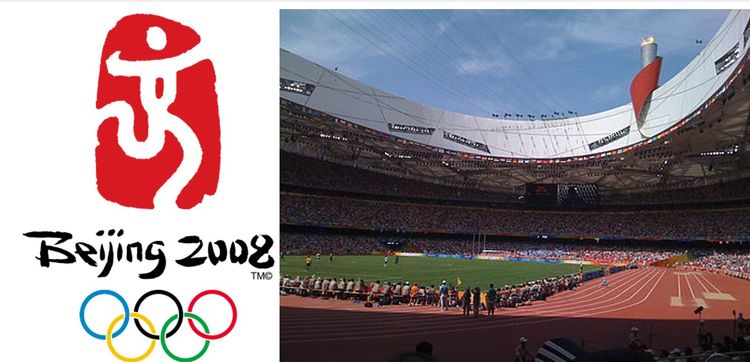The northwest Africans (from Morocco, Algeria, and Tunisia) aren't competitive below 800m. Their most famous runners specialized in the 1500 but they are competitive at all the longer distances.
Both the black-skinned Kenyan and brown-skinned Ethiopian runners come overwhelmingly from highland portions of their countries, where evolving an efficient use of the limited oxygen is crucial.
Moreover, the “running tribe” of Kenya, the Kalenjin, had a history of cattle rustling on foot, sending young men to steal neighbors' cows and stampede them home. The slower ones got spears in their backs, while the faster ones got multiple wives.
Ethiopia tends to produce superstar runners with long careers, such as Haile Gebrselassie and Kenenisa Bekele, while Kenya burns through countless speedy farmboys.
The differences between East Africans and West Africans are often overemphasized. While the former tend to have more aerobic capacity and slow twitch muscle fibers and the latter more musculature and more fast twitch fibers, black Africans tend to share the body structure most efficient for running. As O.J. Simpson, who once shared a world record in the sprint relay with his USC track teammates, explained in 1977:
“We are built a little differently, built for speed—skinny calves, long legs, high asses are all characteristics of blacks.”
The Northwest Africans, such as 2004 Olympic hero Hicham El-Guerrouj, in contrast, are primarily olive-skinned Caucasians. Many Berbers and Arabs live in the tall Atlas Mountains of the Maghreb, but it's not clear whether their runners are predominantly highlanders. El-Guerrouj, for instance, grew up on the Mediterranean. More research into northwest African runners is needed.

People of European descent (blue line) appear to be about equally strong at all distances, but do relatively best at the lengths where West Africans and East Africans aren't as specialized: 400 to 1500 and again at the marathon.
East Asians are noticeable only in the marathon, although there have been several good-but-not-great Japanese sprinters. In the 100, Japanese have comprised four of the 64 semifinalists over the last four Olympics, and they account for one of the top 200 times at 200 meters.
Not shown on these graph are all the regions with negligible representation. In particular, South Asia is a black hole for sports other than cricket.
It's true that each culture has its peculiar favorite length—Americans in the 400, Kenyans in the 3000m steeplechase, and Maghrebians in the 1500.
Still, hereditary differences are the simplest explanation for why track-crazy countries like Kenya, Ethiopia, and Morocco can't buy a sprinter, while Jamaica can't produce a competitive miler. Runners and coaches always have an incentive to explore longer and shorter distances.
The relationship between amount of effort and amount of success in running is usually assumed to be high, but the relationship is complicated. Sprinting requires less exercise to be world class than just about any other sport. In preparation for winning four gold medals at the 1984 Los Angeles Olympics, Carl Lewis worked out eight hours per week.
The money in sprinting isn't as big as in football, but, then, you don't get knocked down by trained professionals either.
Distance running is much harder, of course, but it's not at all clear that white people suddenly got lazy when the East Africans emerged.
Consider who runs cross country in American high schools. I looked up the 185 boys who had recorded the 300 fastest times in high school cross country running (5000 meters distance) in America in 2006. Here, roughly, are the demographics weighted by number of times in the top 300:
- Non-Hispanic White 82%
- East African 9%
- Spanish Surname 5%
- Black American 2%
- American Indian 1%
- East Asian 0.7%
- South Asian 0.3%
If you subtract the East Africans out, you get whites at 90%, whereas they make up less than 60% of the teenagers in America today. That's rather interesting for what it might say about willingness to put in enormous amounts of effort. (Cross country requires minimal cost, other than shoes, so it's wide open to the less affluent.)
An anonymous commenter on my blog explained:
“Distance running is mostly a smart kid sport at the high school level. It doesn't require a lot of hand-eye coordination, but rewards determination and self-discipline and gets you the varsity letter that makes you look well-rounded to college admissions boards. And for bright kids with mile a minute brains, the repetitive, exhausting nature of distance running helps calm the mind and helps these kids get a little centering in their lives.”
Similarly, in the U.S., marathon running is an upscale hobby. It's #27 on the list of Stuff White People Like. The number of Americans finishing a marathon keeps going up yearly, although the average time of finishers has slowed dramatically as the white population ages.
Nevertheless, running is in decline as a spectator sport in the U.S. outside Oregon.
One problem is that doping—most notably, with steroids: artificial male hormones—was long a more visible problem in track than in, say, baseball. This is in part because running is more one-dimensional of a sport than baseball.
It's also because track cracked down harder on dopers. In September 1988, two athletes heavily juiced on steroids set famous records. At the Seoul Olympics, Ben Johnson won the 100 meter dash in 9.79 seconds. Stateside, Jose Canseco became the first baseball player to hit 40 homers and steal 40 bases in one season.
Johnson's medal and record was stripped from him two days later. But baseball didn't get around to drug testing until this decade, after muscleheads like Mark McGwire and Barry Bonds had made a joke of the record book.
Runners continued doping, of course, but a new milestone in punishment was reached recently when sprinter Marion Jones, the American heroine of the 2000 Sydney Games, was sent to prison for lying to federal agents about her use of performance-enhancing drugs.
Samuel Johnson observed, “When a man knows he is to be hanged in a fortnight, it concentrates his mind wonderfully.” Similarly, the current imprisonment of the celebrated Jones has likely concentrated the minds of American Olympians wonderfully.
And, in answer to the superficial question about why Jamaicans outsprinted Americans in 2008, American fear of getting caught probably accounts more than anything else for the performance of American sprinters in Beijing relative to their West Indian rivals.
The Jamaicans and their even smaller neighbors such as Trinidad and the Bahamas have long been contenders, but seldom gold medalists. The lengthy career of the regal sprinter Merlene Ottey, “the Bronze Queen”, epitomizes the regional tradition: she garnered eight Olympic medals, none of them gold.
The Jamaicans argue that the new American drug testing and sanction system has finally leveled the playing field. Americans counter by asserting that now the Jamaicans are more doped than the Americans.
Nobody knows for sure.
For example, the American sprinter most unlikely to be on steroids, the gazelle-like Allyson Felix, finished second in the 200 meters to a Jamaican lady with arms twice the diameter of hers.
On the other hand, Usain Bolt, while certainly muscular, doesn't appear to be more massively over-developed in his upper body than his rivals, the way Ben Johnson suddenly became in the mid-1980s. For contrast, here's a picture from 2004 of the American 200m gold medalist Shawn Crawford.
Considering how awesome Bolt was last week, it seems plausible to assume that if all performance enhancing drugs vanished tomorrow, Bolt would still be the fastest man on Earth.
Ironically, doping among sprinters appears to be an arms race (or a biceps race) that only marginally changes who wins, at least among men.
Thus, the old East German Communist chemical-industrial complex churned out female record setters by the dozens but couldn't manufacture a world class male sprinter. The benefits of a given amount of steroids are much greater for women than men because men average vastly higher levels of natural testosterone. Thus, male runners need suspiciously large, Ben Johnson-sized doses to make huge improvements, while women can bulk-up significantly on smaller, less-easily detected amounts.
So, in men's running, doping doesn't much change the big picture.
Let's return to the fundamental question: why Jamaica produces such fast sprinters.
An article in Science by Constance Holden, Peering Under the Hood of Africa's Runners, reviewed the state of the art in scientific research on racial differences in running as of 2004.
In 2006, however, Dr. William Aiken, president of the Jamaica Urological Society, offered in the Jamaica Gleaner a reductionist theory that has the potential to explain many racial differences beyond sprinting:
“I wish to propose a hypothesis that addresses not only the aspect of Jamaica's raw athletic talent, but also encompasses an explanation of seemingly diverse phenomena as our high incidence of prostate cancer (one study found it to be by far the highest in the world at 304 / 100,000 men / year), our high crime rate (murder capital of the world status earlier this year), our high road traffic accident and fatality rate, and our alleged high levels of promiscuity.“What do these seemingly disparate phenomena, characteristic of Jamaican life, have in common? On close examination these phenomena are manifestations of high levels of aggressiveness and drive, high libidos, highly efficient muscles from persons of lean body mass and black ethnicity.
“On closer scrutiny all of these phenomena are either related to high circulating levels of testosterone or alternatively to high levels of responsiveness of testosterone receptors to circulating testosterone. It has already been shown that the testosterone receptors of blacks are different genetically to those of whites and this difference confers increased responsiveness to testosterone.”[The athletic prowess of Jamaicans, November 22, 2006]
Occam's Razor suggests that Aiken's theory should be considered carefully.
[Steve Sailer (email him) is founder of the Human Biodiversity Institute and movie critic for The American Conservative. His website www.iSteve.blogspot.com features his daily blog.]













